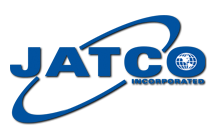Over Molding represents a significant advancement in the manufacturing and design of plastic components. This injection molding process seamlessly integrates different materials into a single, functional product, enhancing its aesthetic appeal, usability, and performance. By understanding the intricacies of Over Molding, manufacturers can unlock new possibilities in product development and design.
Understanding Over Molding
The Over Molding Process
Over Molding is a sophisticated, multi-step injection molding technique that combines two or more components into a single entity. This process typically involves molding a softer, rubber-like plastic over a harder substrate, such as ABS or polycarbonate, to create parts with diverse textures, colors, and material properties.
Applications and Benefits
The versatility of Over Molding makes it indispensable across various industries, including medical devices, electronics, automotive, and consumer products. It plays a crucial role in creating complex and innovative products by adding ergonomic grips, sealing components, or integrating multiple functions into one part.
Key Techniques in Over Molding
Two-Material Molding
This method involves combining different materials to achieve desired mechanical or aesthetic properties. Two-material molding allows for the creation of products with enhanced functionality and durability.
Insert Molding and Substrate Overmold
Insert Molding involves embedding metal inserts into plastic components, providing superior strength and electrical conductivity. Similarly, substrate and overmold techniques involve molding one plastic over another, enriching the product’s functionality and aesthetic appeal.
Combining Multiple Materials
The essence of Over Molding lies in its ability to merge various materials into a cohesive product. This process enables the design of components that benefit from the unique properties of each material, such as flexibility, strength, or thermal resistance.
The Role of Technology in Over Molding
Innovation in injection molding machines, such as the introduction of double shot machines, has expanded the possibilities of Over Molding. These advancements allow for more complex designs and the efficient production of multi-component parts.
Frequently Asked Questions
What is the difference between Over Molding and Insert Molding?
Over Molding generally refers to the process of molding one material over another material substrate, while Insert Molding specifically involves embedding an insert (often metal) into a plastic component during the molding process.
Can Over Molding be used with any type of plastic?
Over Molding is versatile but requires careful selection of materials to ensure proper adhesion and compatibility. Typically, a softer, rubber-like plastic is molded over a harder plastic substrate.
What industries benefit most from Over Molding?
Numerous industries benefit from Over Molding, including medical, electronics, automotive, and consumer goods, due to its ability to enhance product functionality, durability, and aesthetics.
Contact us if you need help with your next over molding project!


